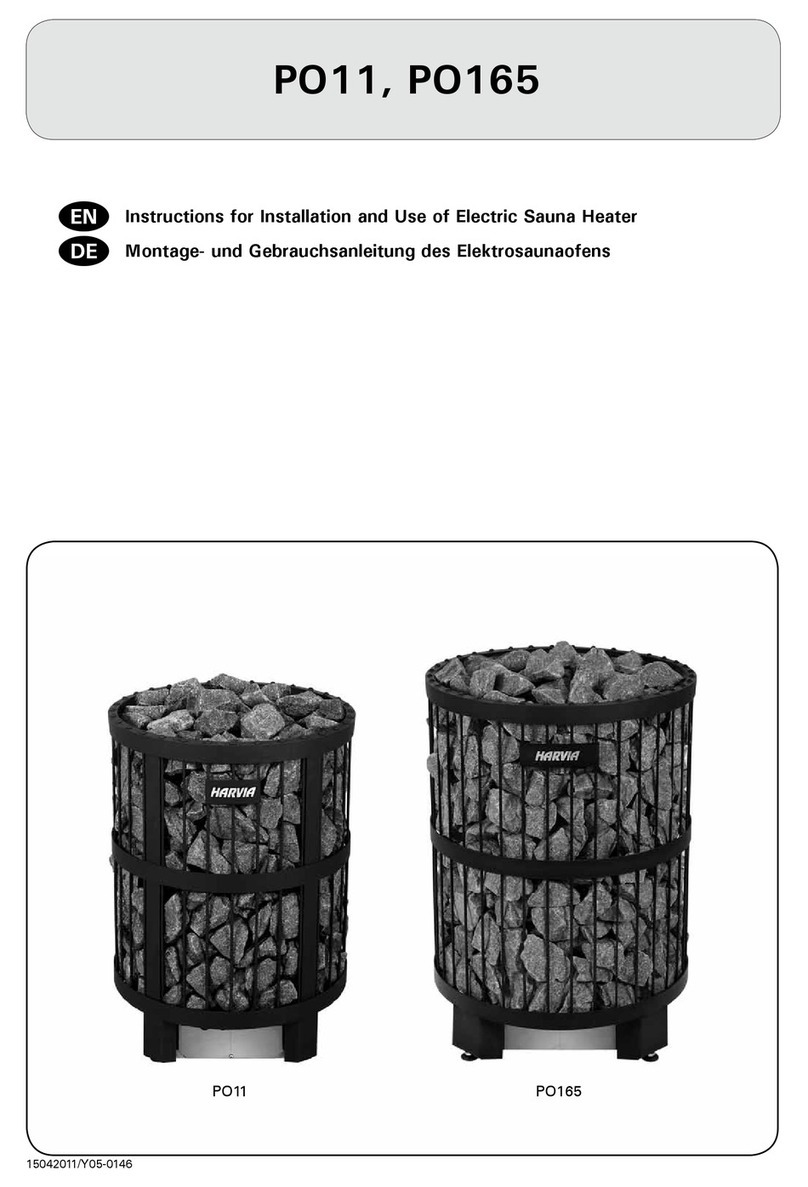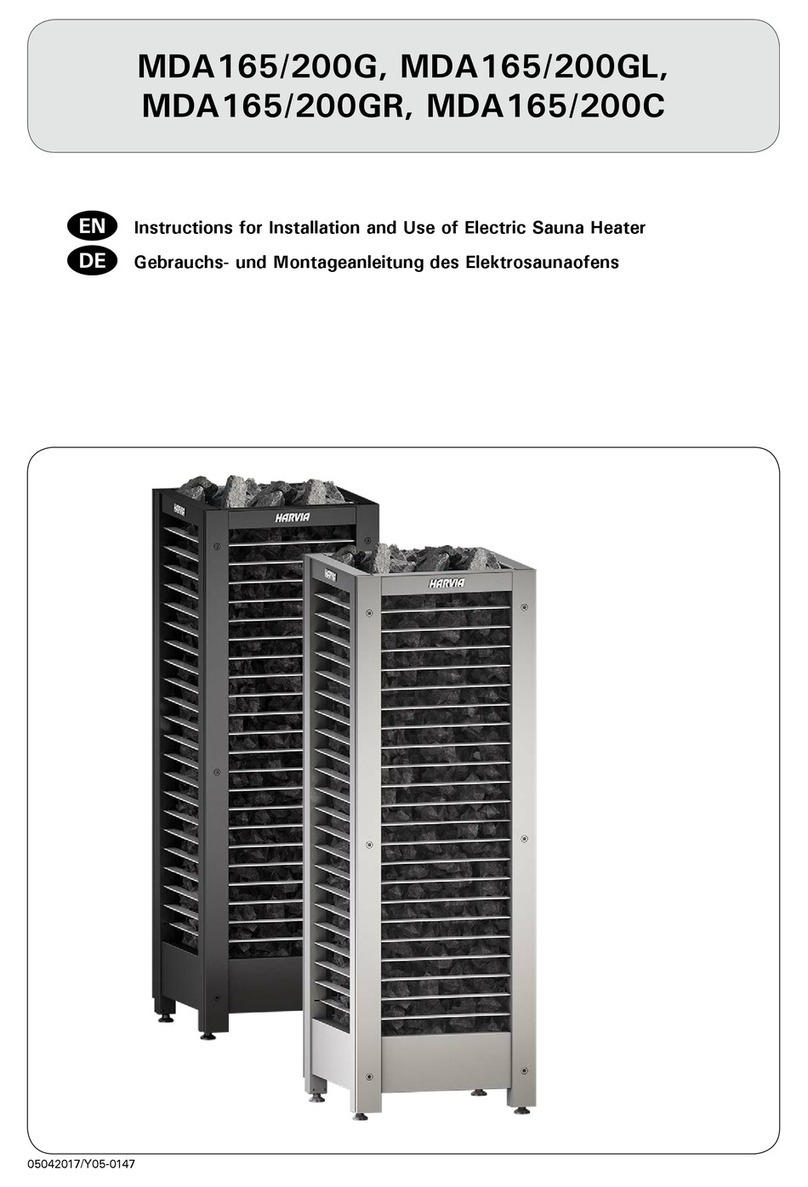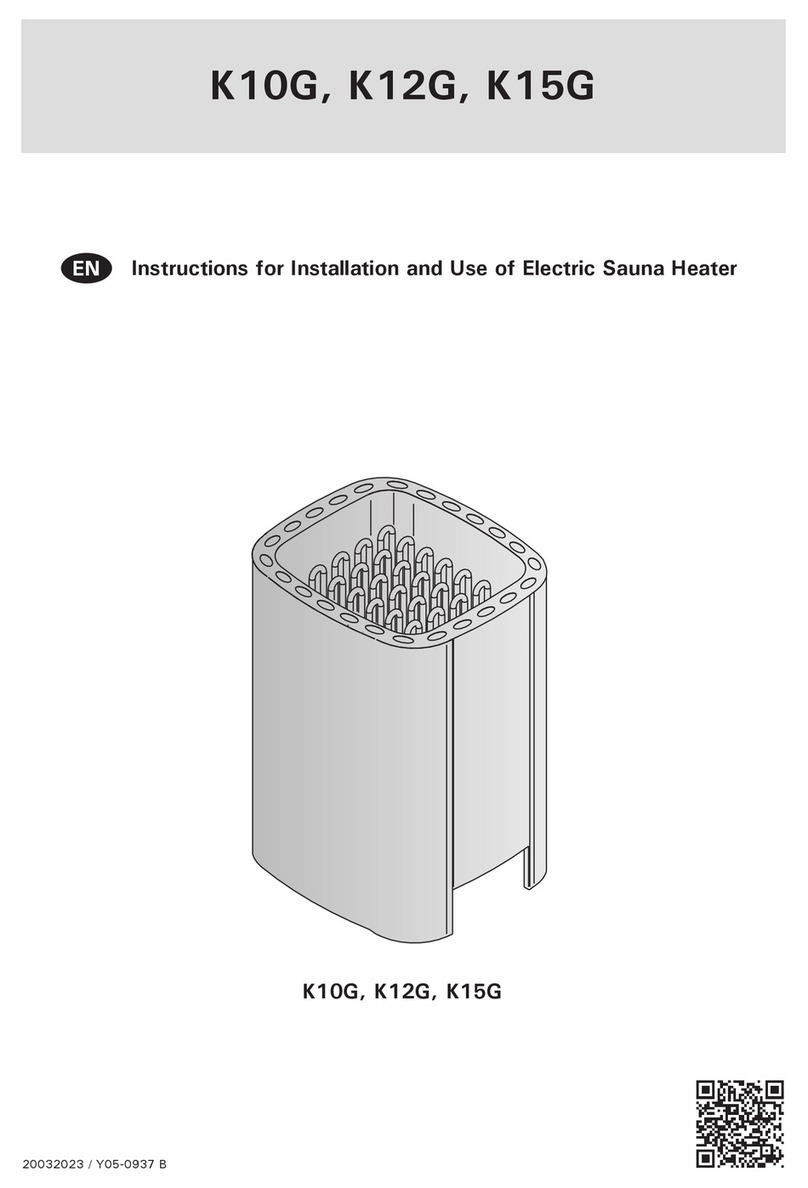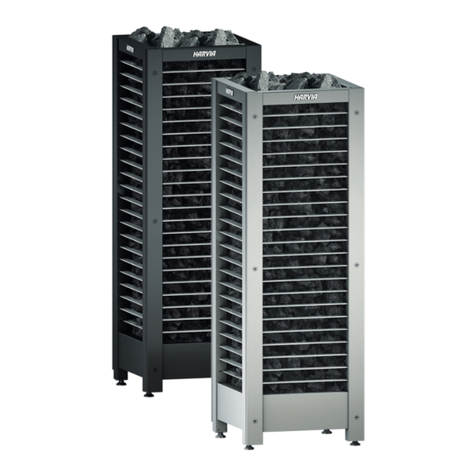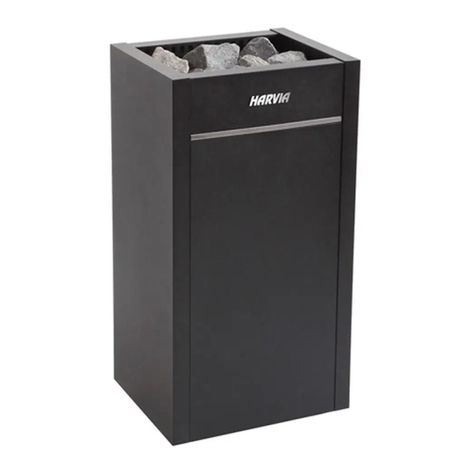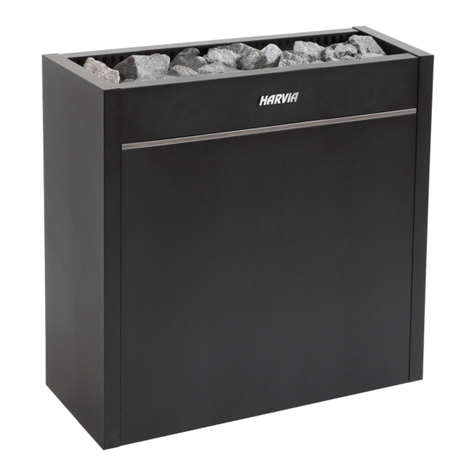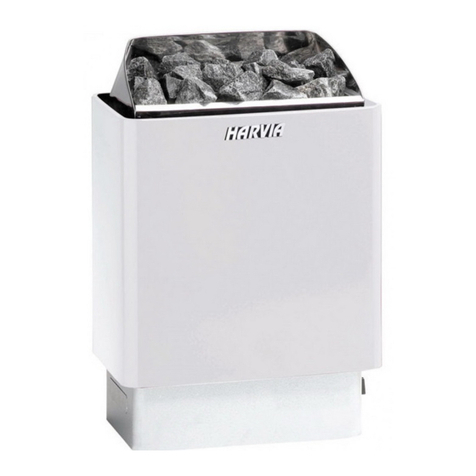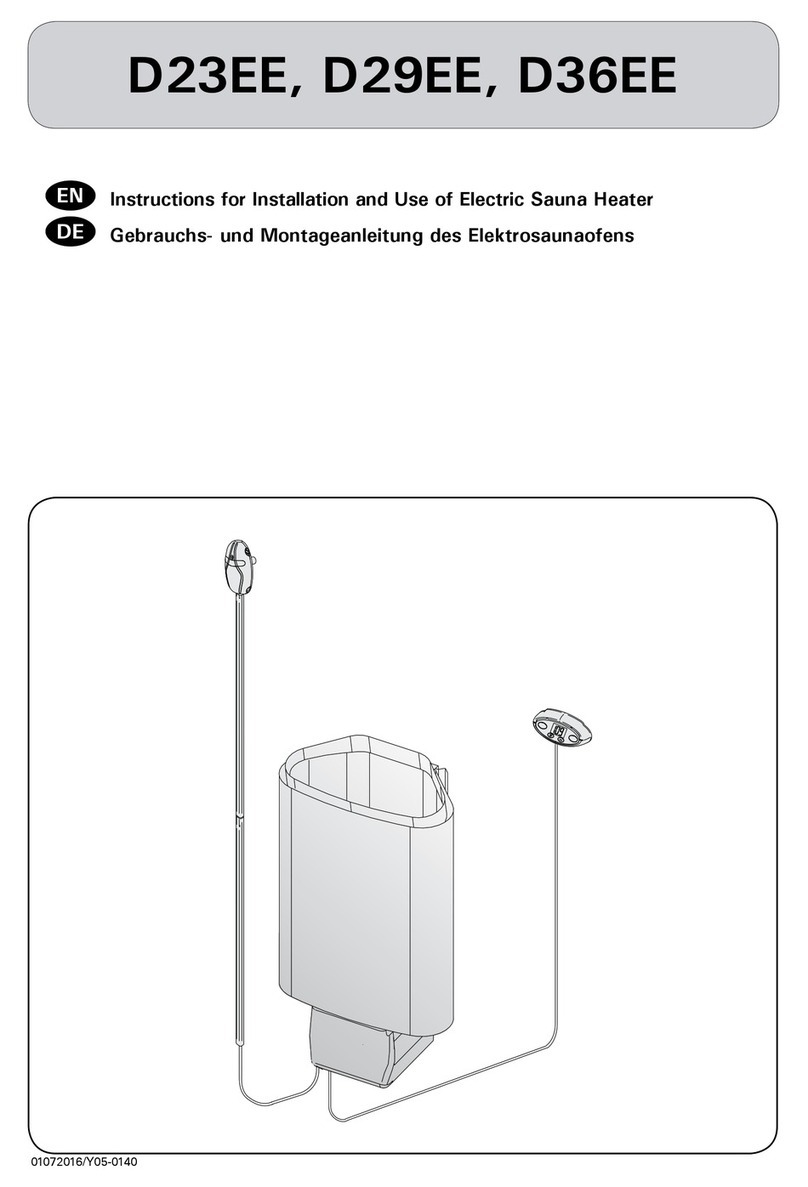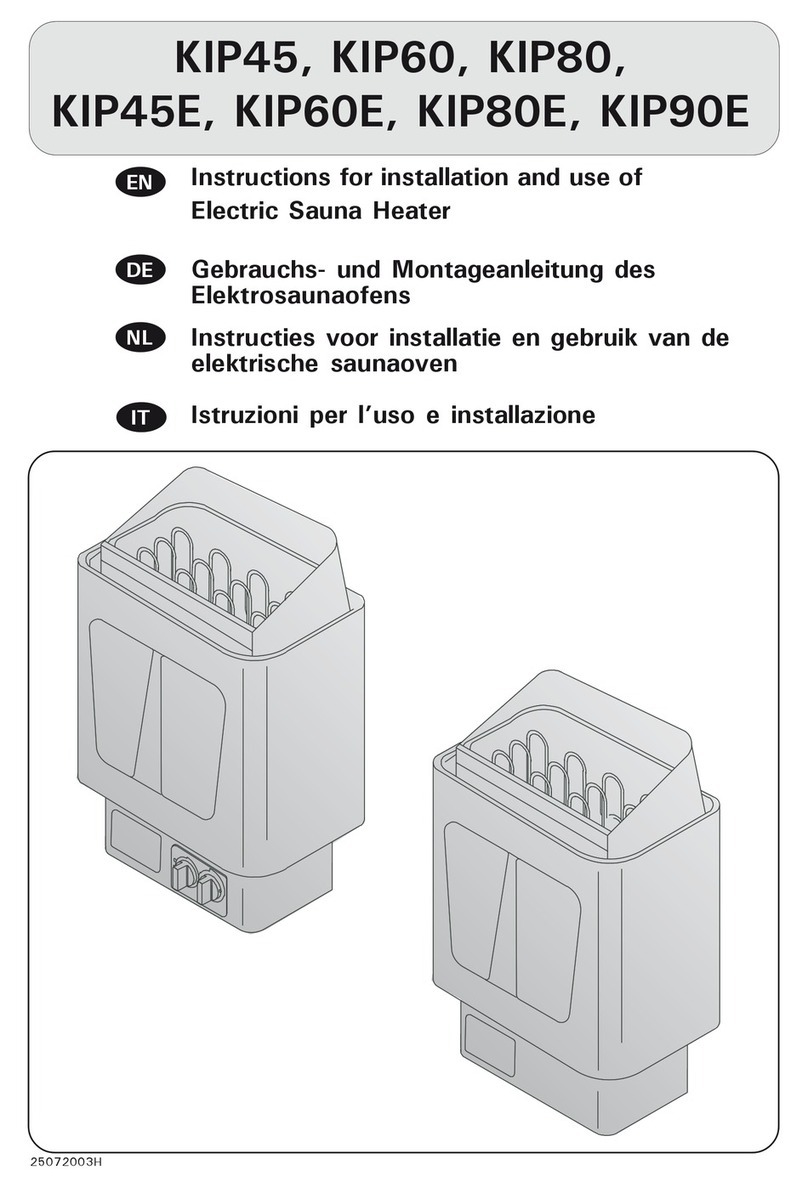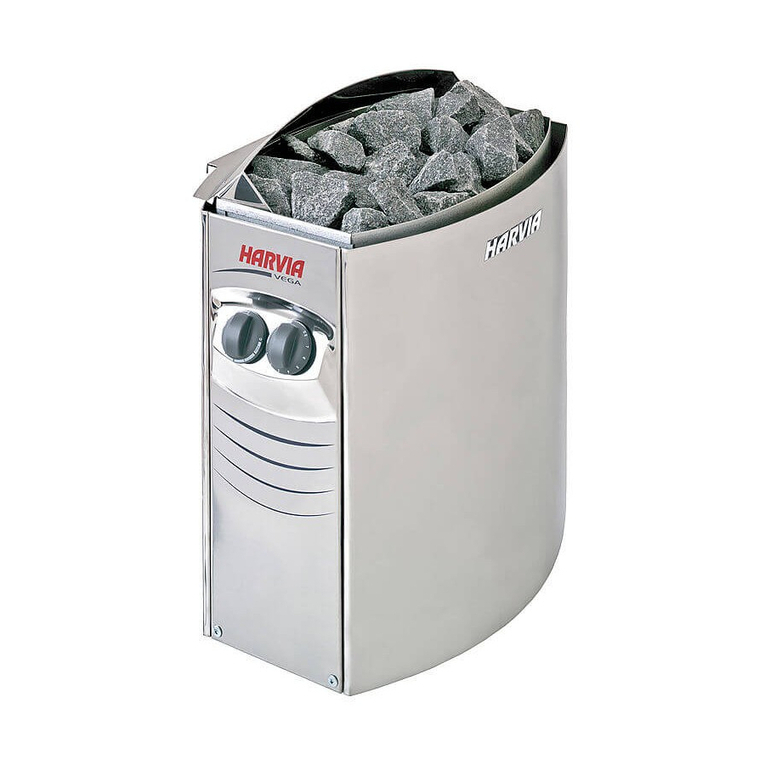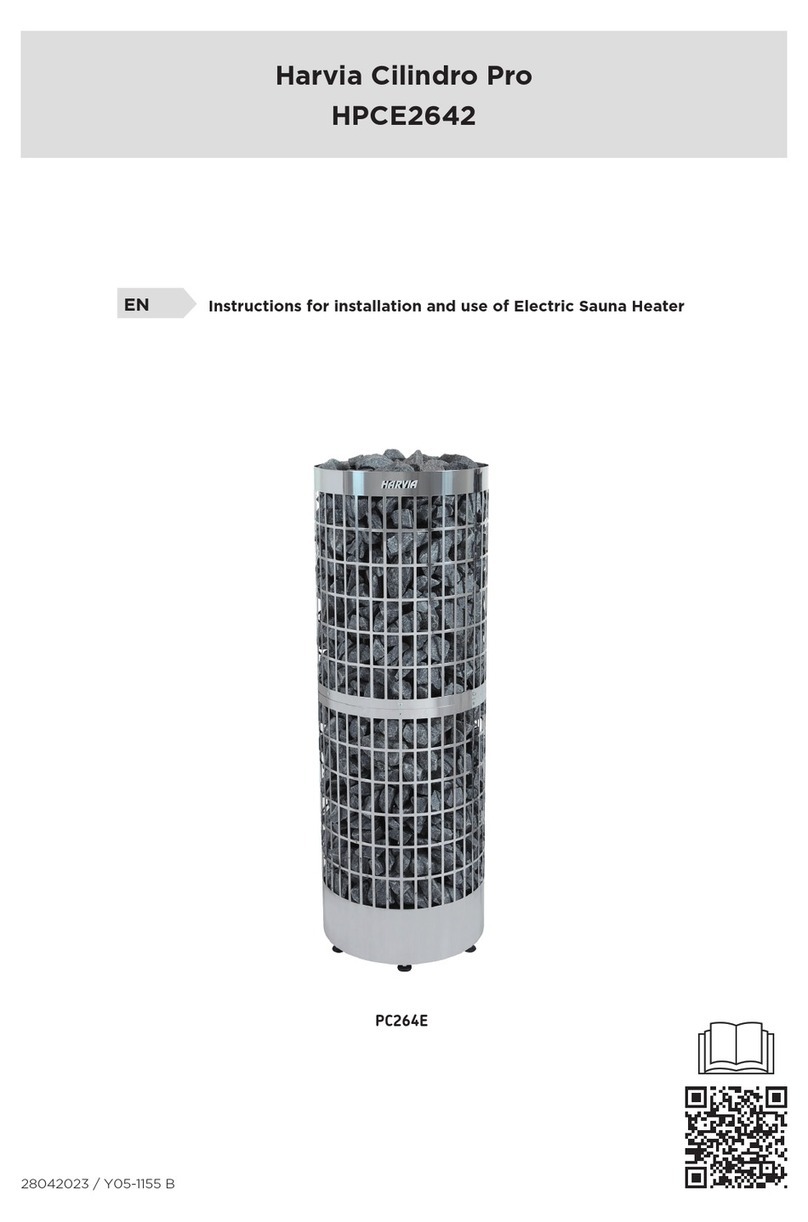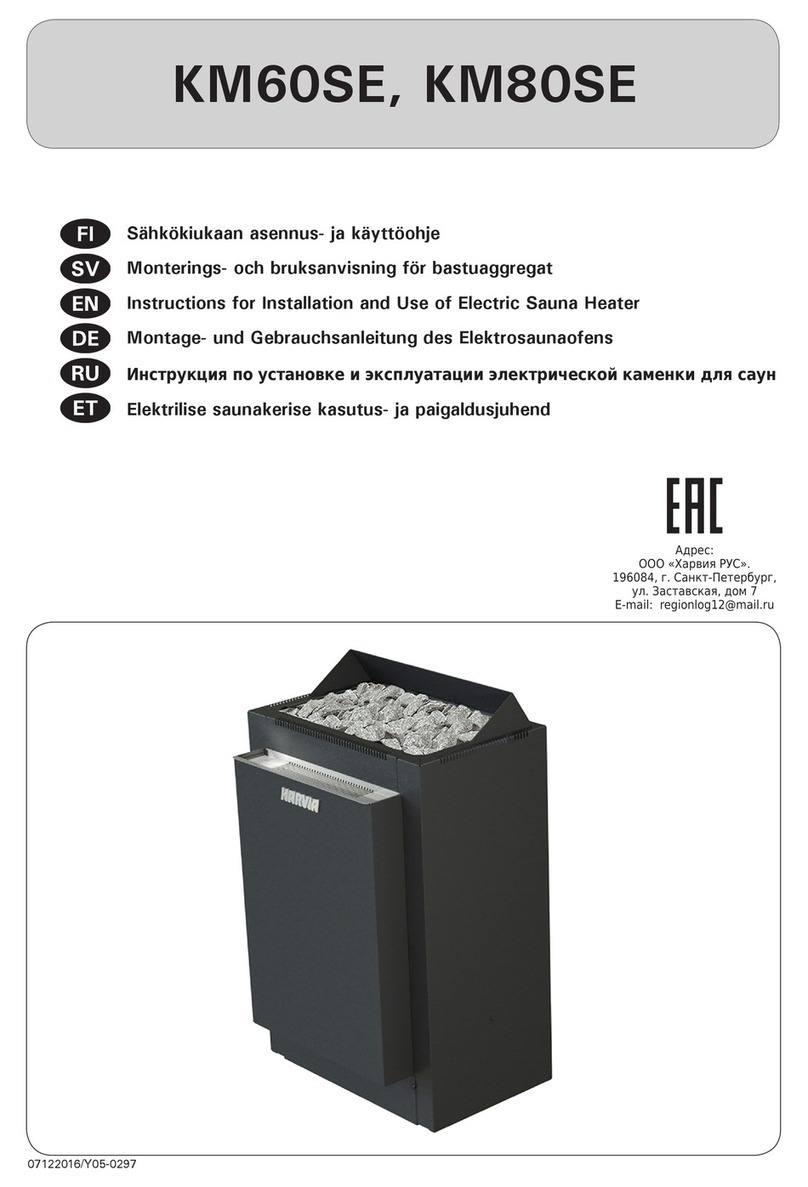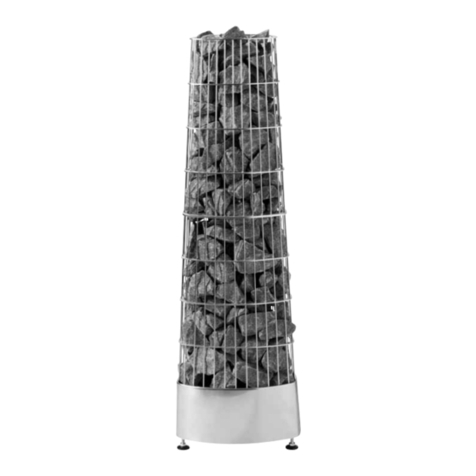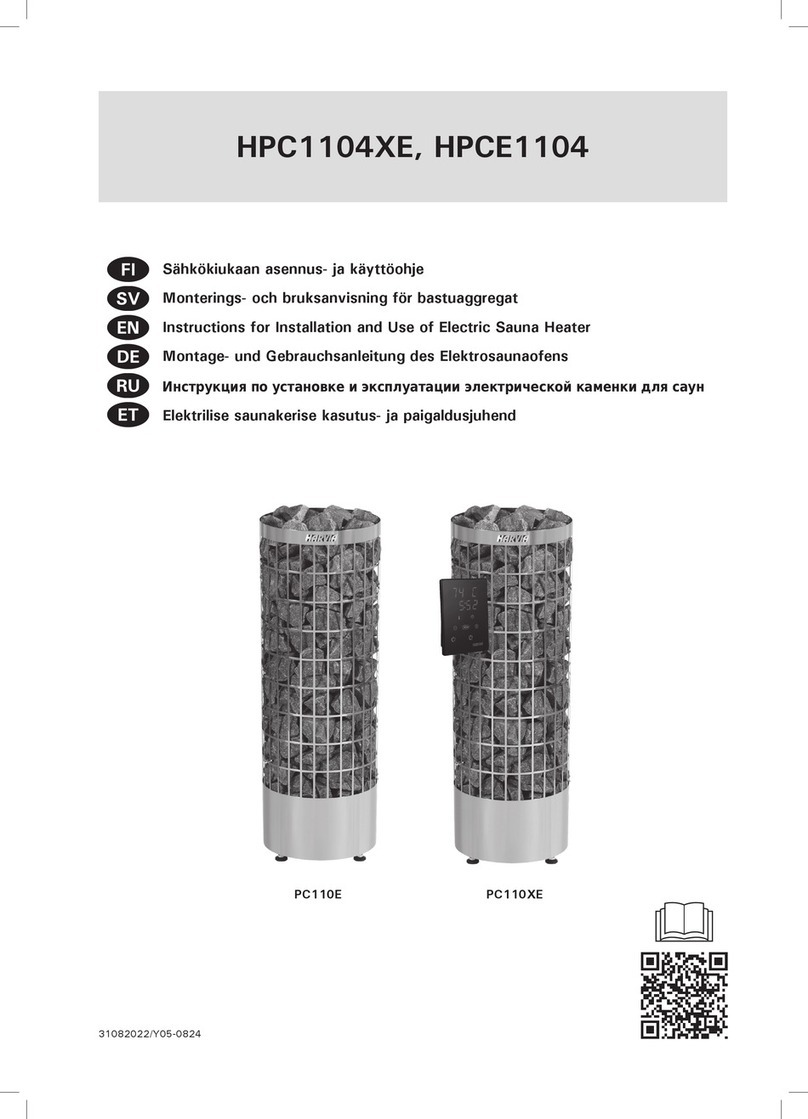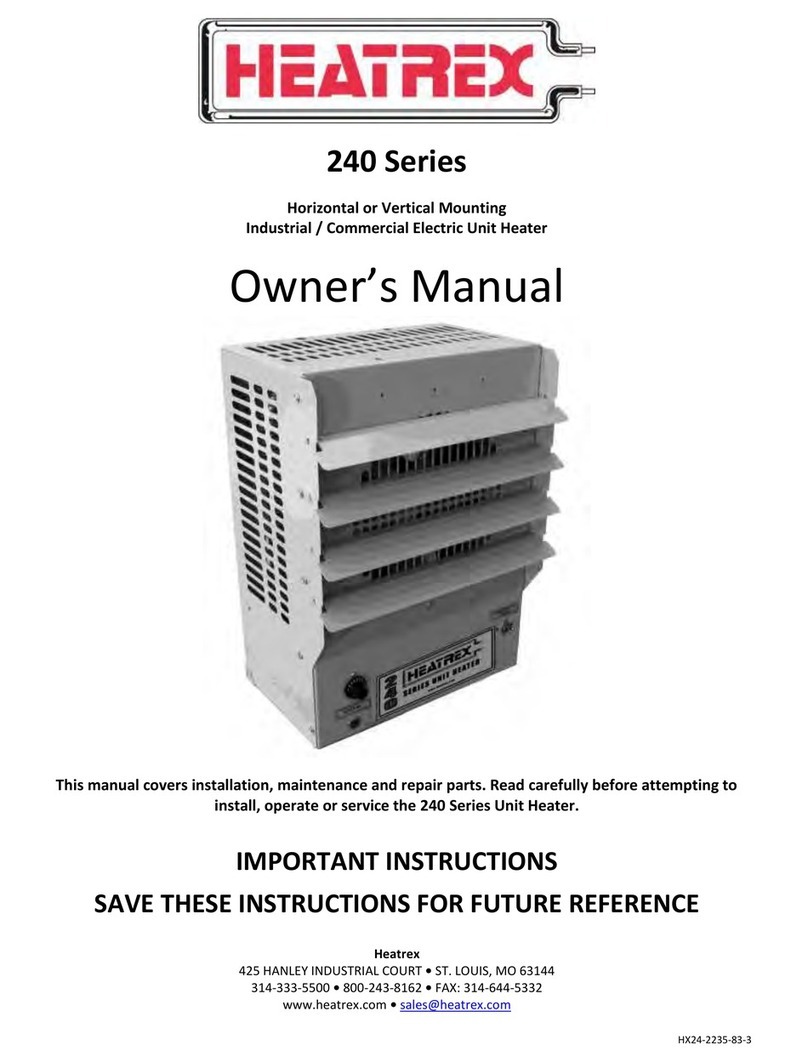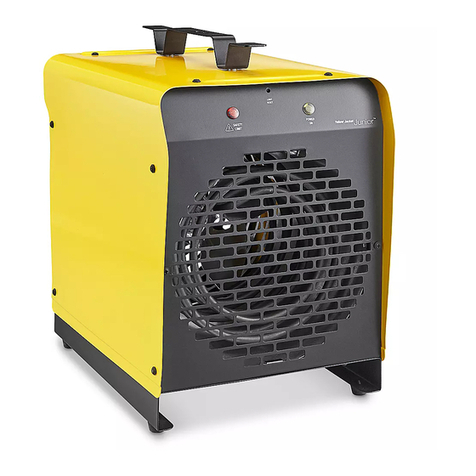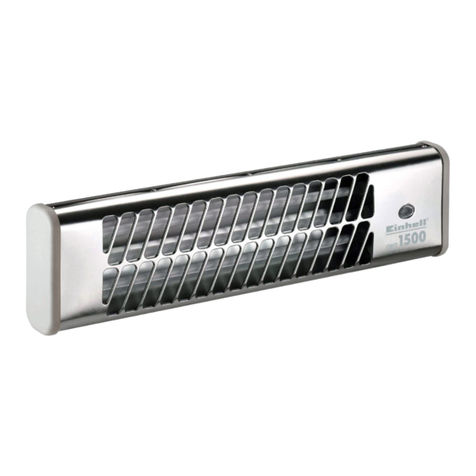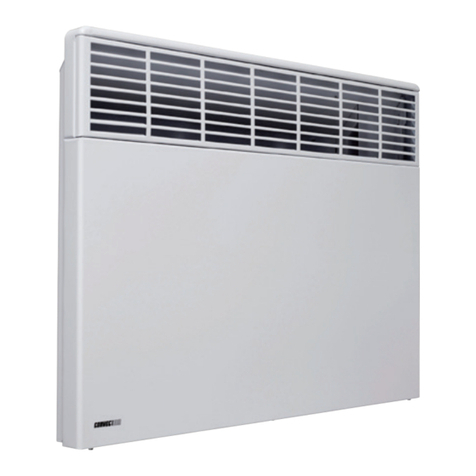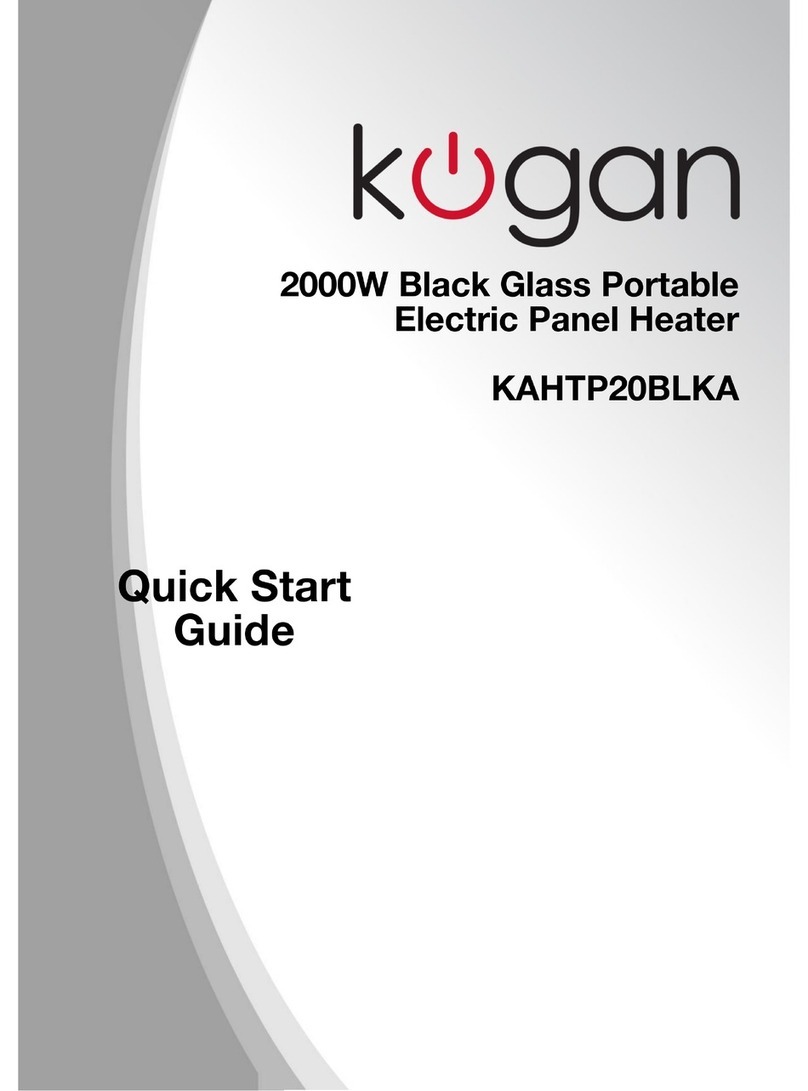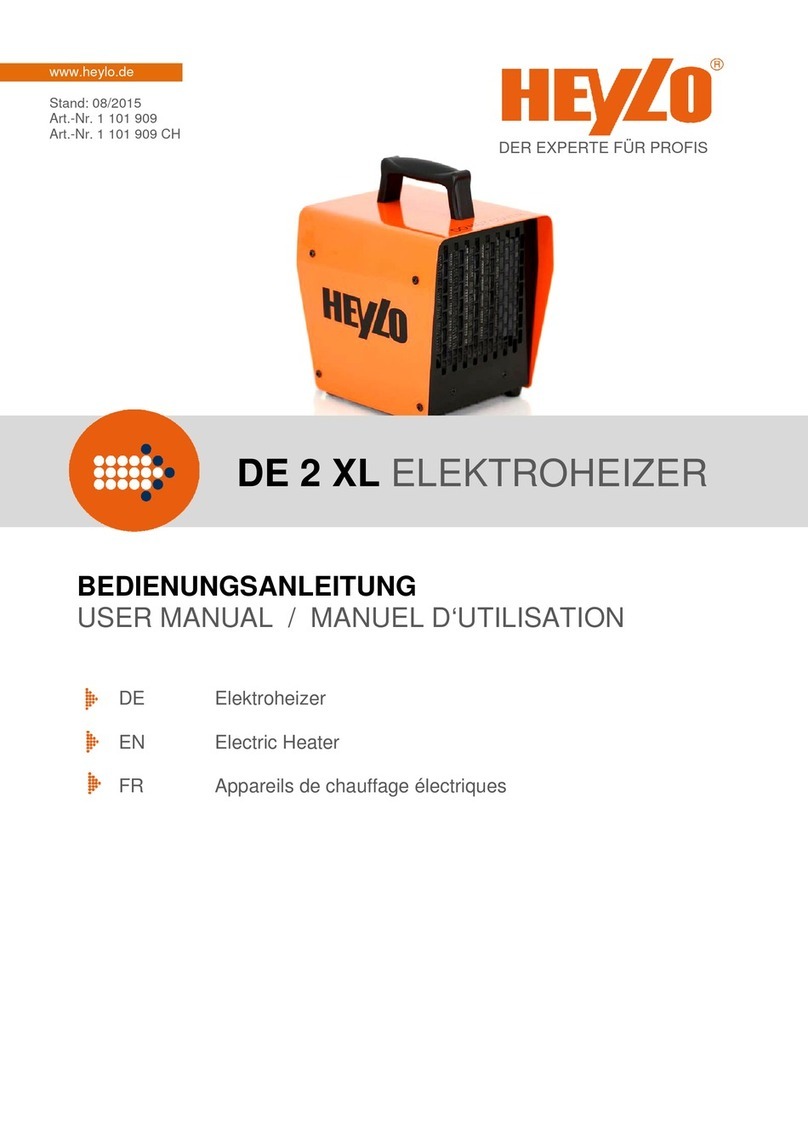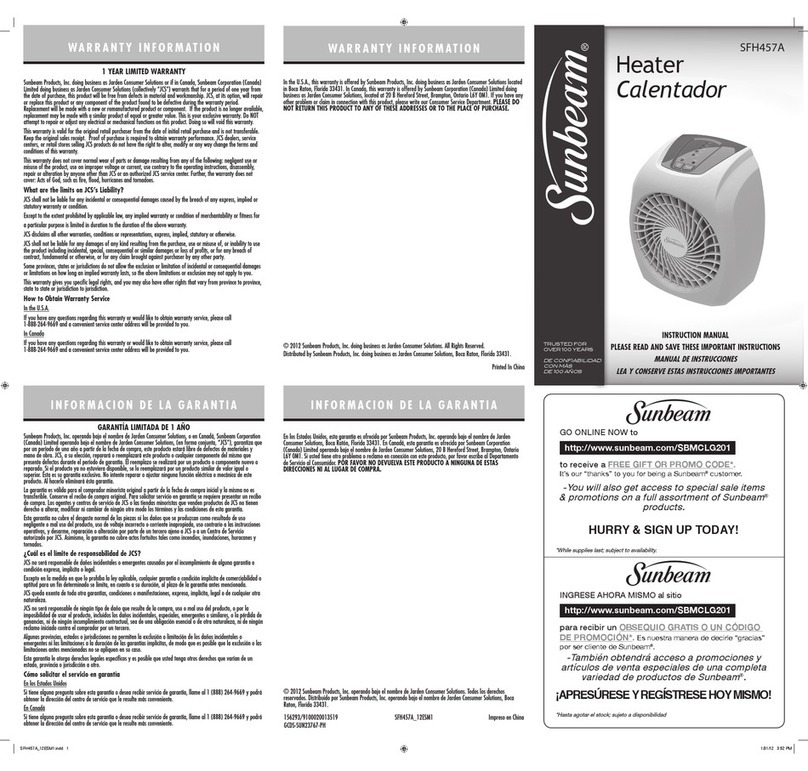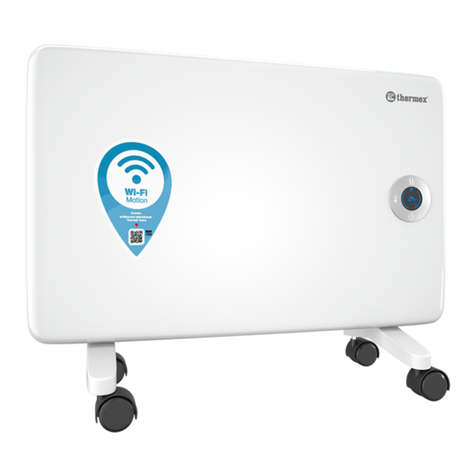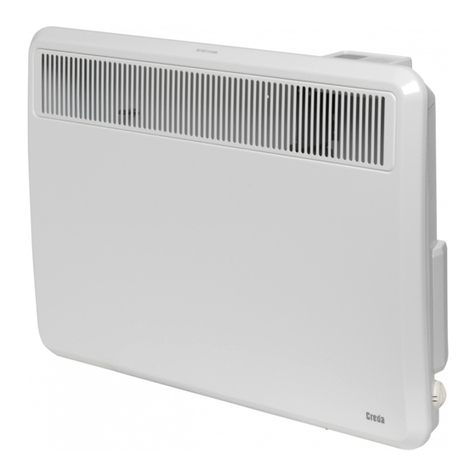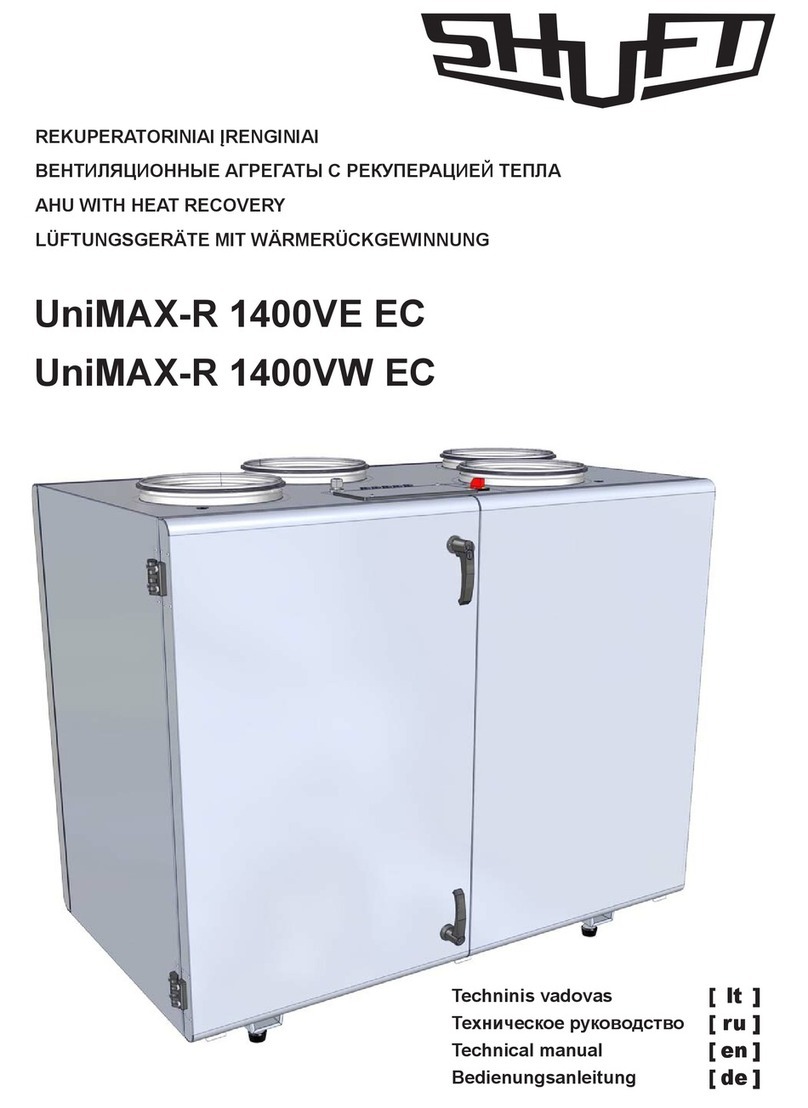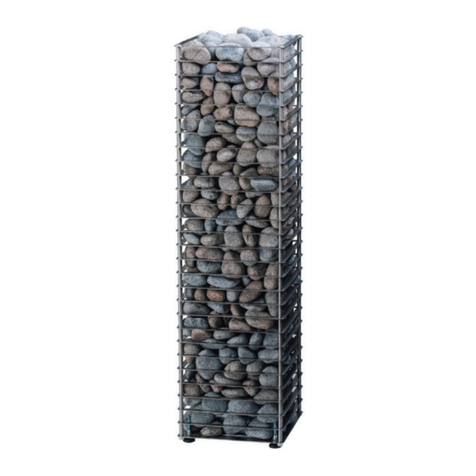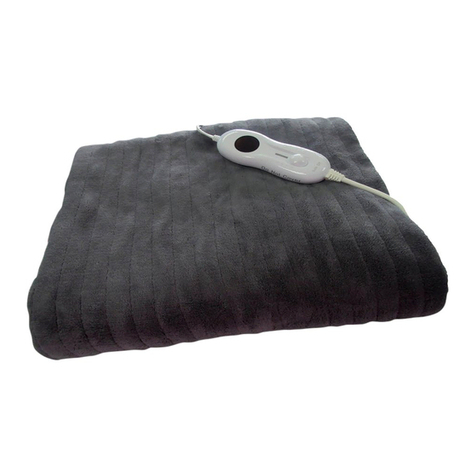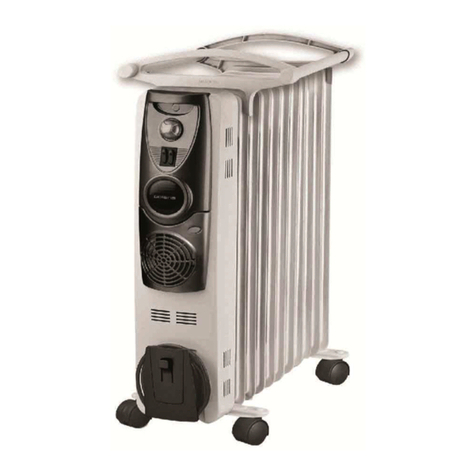
EN ES
8
include the following:
• humuos content (colour, taste, precipitates);
recommended content less than 12 mg/litre.
• iron content (colour, smell, taste, precipitates);
recommended content less than 0,2 mg/litre.
• hardness - the most important substances
are manganese (Mn) and calcium (Ca);
recommended content of manganese 0,05 mg/
litre, calcium less than 100 mg/litre.
Calcareous water leaves a white, sticky layer on
the stones and metal surfaces of the heater. Calci-
fication of the stones deteriorates the heating prop-
erties.
Ferrous water leaves a rusty layer on the surface
of the heater and elements, and causes corrosion.
The use of humous, chlorinated water and sea-
water is forbidden.
Only special perfumes designed for sauna water
may be used. Follow the instructions given on the
package.
Use (KIP45–KIP80)
Temperature control: The desired sauna temperature
is set by turning the knob on the heater tempera-
ture control. The sauna will heat up to the required
temperature within about one hour, depending on
the size, construction and thermal insulation of the
sauna. The thermostat will keep the sauna at the
set temperature.
The heater thermostat also protects the heat-
ing elements against overheating. If the stones are
packed too tightly air will not circulate properly in-
side the unit. The thermostat will cut the power off
to prevent overheating, with the consequense that
the sauna will heat up abnormally slowly.
Temperature limiting: If for some reason the wooden
components of the sauna become abnormally hot,
the temperature limit cut-out will switch the heater
completely. When the temperature has reached nor-
mal level, the limit cut-out can be manually reset us-
ing the button located next to the heater thermostat
knob. (See figure 1).
Timer (KIP45-KIP80)
The heater is switched on by using the timer switch.
The timer has two scales: the first one (with larger
figures) is the ”instantly on” section; that is, the
heater is on for a selected period of time (0–4 hours).
The other section is the so called ”pre-set section”
(1–8 hours), which is used to start the heater after
a certain time. The heater starts when the timer has
turned the switch back to the ”instantly on” section,
that is, at number four (4). After this, the heater will
be on for about 4 hours, unless the switch is turned
to zero before that. At zero (0), the supply to the
elements is cut off and the heater is switched off.
• contenido de humus (color, sabor, sedimentos);
recomendación por debajo de 12 m/l.
• contenido de hierro (color, sabor, sedimentos);
recomendación por debajo de 0,2 mg/l.
• dureza; las sustancias más importantes
son manganeso (Mn) y calcio (Ca) o cal; la
recomendación de manganeso es por debajo
de 0,05 mg/l, y la de calcio, por debajo de 100
mg/l.
El agua caliza deja una capa blanca pastosa
en las piedras del calentador y en las superficies
metálicas. La calcificación de las piedras debilita las
propiedades de la sauna.
El agua ferruginosa deja una capa de óxido en
la superficie del calentador y de los elementos
calefactores que puede producir erosión.
Está prohibido el uso de aguas cloradas o que
contengan humus y agua de mar.
Solamente se podrán utilizar fragancias destinadas
al agua de la sauna. Siga las instrucciones del
envase.
Uso (KIP45-KIP80)
Ajuste de temperatura: Mediante los reguladores de
temperatura se puede elegir la temperatura deseada
de la sauna. La sauna alcanzará la temperatura
deseada aproximadamente en una hora, dependiendo
del tamaño, la estructura y el aislamiento térmico. El
termostato se encargará de que la temperatura de
la sauna permanezca al nivel deseado.
El termostato del calentador también protege los
elementos calefactores del sobrecalentamiento. Si
las piedras del compartimento están demasiado
apretadas, es posible que impidan la circulación
del aire en el calentador y el calentamiento de la
sauna se ralentice cuando el termostato interrumpa
la corriente hacia la resistencia sobrecalentada.
Limitación de temperatura: En caso de que, debido
a un fallo, las partes de madera de la sauna alcancen
una temperatura peligrosamente alta, el limitador
de temperatura interrumpirá toda la potencia del
calentador. Una vez la temperatura haya vuelto a
descender a un valor habitual, podrá conectarse de
nuevo la corriente pulsando el botón de retroceso
del limitador de temperatura, que se encuentra al
lado del regulador de temperatura del calentador.
Antes de esto, deberá aclararse el motivo del fallo.
Ver figura 1.
Temporizador (KIP45-KIP80)
El temporizador 8-4 h, que funciona como interruptor
principal del calentador, corta automáticamente la
corriente cuando haya pasado el tiempo deseado. En
el reloj de preselección se puede escoger un tiempo
de encendido programado de entre 1 y 8 horas, y el
tiempo de funcionamiento máximo siempre es de 4
horas. El tiempo de encendido programado se puede
utilizar cuando se desee que la sauna se caliente
transcurrido cierto tiempo.
